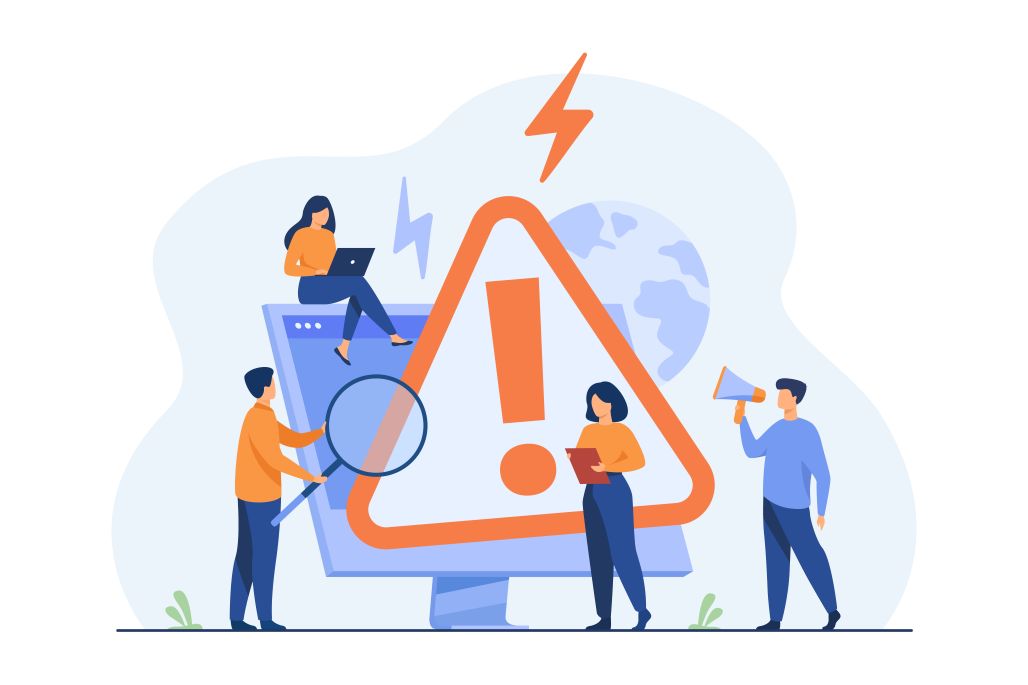If you’re a safety manager, HR professional, or business owner, you’ve probably heard of hazard communication training. But here’s the thing—many organizations still treat it like a checkbox activity. “Just get it done so we can move on.”
That mindset is risky. Not only does it expose companies to heavy fines, but more importantly, it puts employees at serious risk of injury or illness. Chemical safety isn’t a small issue—it’s one of OSHA’s top 10 most-cited violations every year (OSHA Top 10 FY 2024).In fact, hazard communication standard training is critical for compliance and employee safety.
At Calibr’s Compliance Training Solution, we believe compliance shouldn’t be about paperwork and penalties. It should be about creating safer workplaces where people are informed, prepared, and confident. Explore our website to see how Calibr simplifies compliance, contact us for personalized guidance, or sign up for a free trial to start delivering effective hazard communication training today.
In this blog, we’ll break down Cal/OSHA 8 CCR §5194, explain why hazard communication training matters, and show how to make it easy and engaging.

What Is Hazard Communication Training?
Hazard communication training—often called “HazCom training”—is designed to ensure employees understand the chemical hazards they may be exposed to at work.
It covers:
How to read labels and recognize hazard symbols,
How to interpret Safety Data Sheets (SDSs),
What protective equipment or measures to use,
How to respond in case of a spill, exposure, or emergency.
The goal? Employees should never handle or be near hazardous chemicals without knowing the risks and the right precautions.
Why Hazard Communication Matters So Much
Let’s cut through the legal language and focus on the “why.”
It saves lives: Chemicals can cause burns, respiratory issues, or even cancer. Knowing how to handle them reduces accidents.
It prevents fines: Companies face penalties for missing written programs, poor labeling, or failing to train employees.
It builds trust: When employees see that leadership invests in proper training, they feel valued. A culture of safety drives retention and engagement.
It reduces costs: Accidents and illnesses mean medical bills, compensation claims, lost productivity, and legal risks. Proactive training is cheaper than damage control.
Cal/OSHA 8 CCR §5194 – The Requirements

Employers must follow hazard communication standard training outlined in 8 CCR 5194 for all employees handling chemicals.8 CCR 5194 hazard communication California outlines required employee training and documentation standards
So, what does Cal/OSHA actually require? Here are the basics:
Written Program: Every employer must have a documented hazard communication program that explains how hazards are identified, labeled, and communicated.
Chemical Inventory: Maintain a complete list of hazardous substances on site.
Labels & Pictograms: All containers must carry proper GHS (Globally Harmonized System) labels with hazard pictograms.
Safety Data Sheets (SDSs): SDSs must be readily available to employees—whether in paper binders or electronically.
Employee Training: Workers must be trained before exposure and whenever new chemicals or hazards are introduced.
For a complete breakdown, check the OSHA Hazard Communication Standard.
5 Steps to Master Hazard Communication Training
1. Write a Solid Program
Think of your hazard communication program as your “playbook.” Develop a Cal OSHA hazard communication program with clear responsibilities, labels, and SDS management. It should outline:
Who’s responsible for maintaining the program,
How chemicals are labeled and tracked,
Where SDSs are kept,
How and when employees are trained.
Tip: Don’t let it sit in a binder gathering dust. Review and update it regularly.
2. Keep Inventory & SDSs Updated
Your chemical inventory should always be current. If new chemicals are added, update the list immediately. All procedures should follow 8 CCR 5194 requirements to ensure safety and compliance SDSs should be available in a way employees can easily access—whether that’s a physical binder in the workplace or digital access on mobile devices.
3. Deliver Relevant Training
Employees tune out when training feels irrelevant. Don’t use generic modules that talk about chemicals they’ll never see. Make sure to deliver hazard communication standard training tailored to each role and scenario. For example:
In a manufacturing plant, focus on solvents, cleaning agents, and corrosives.
In a lab, focus on acids, bases, and flammable materials.
In an office, maybe it’s just toner or cleaning products—but the training still applies.
Practical, scenario-based examples stick better than dry theory.
4. Train at the Right Times
By law, hazard communication training is required at hiring, before employees handle chemicals, when new hazards are introduced, or whenever labels/SDSs/procedures are updated .This isn’t a one-time activity. Think of it as a cycle.
5. Track & Refresh Training
Keeping records isn’t just about compliance—it’s about accountability. Document who was trained, when, and what topics were covered.Use refresher sessions to close knowledge gaps and reinforce safe habits.Ensure your records align with 8 CCR 5194 hazard communication California for audit readiness
Is Hazard Communication Program Employee Training Required?
Yes. Under Cal/OSHA 8 CCR §5194, hazard communication training is mandatory. Employees must not work with or near hazardous chemicals unless they have been properly trained. Employers who skip this requirement risk financial penalties and liability if accidents occur.
For businesses looking for structured training, courses like those offered by OSHAcademy—including their certified HazCom training—can be an efficient way to meet program requirements while ensuring high-quality instruction.
Common Mistakes Employers Make
Even with good intentions, many organizations fall short. Here are the top mistakes we see:
One-time training only. Employees are trained at hire but never again. Knowledge fades fast.
Generic content. Training that doesn’t address real workplace hazards feels irrelevant.
Outdated SDSs. SDS binders gather dust and don’t reflect current inventories.
No documentation. Without training records, it’s impossible to prove compliance during audits.
Language barriers. Training in one language only excludes non-native speakers.
How to Keep Employees Engaged in Training

Hazard communication isn’t the most exciting topic—but it doesn’t have to be boring. Here are strategies to make it engaging:
Gamify it: Use points, badges, or leaderboards.
Microlearning: Break it into short, focused lessons.
Role-based scenarios: Teach employees what’s relevant to their daily work.
Visuals & videos: GHS symbols and pictograms are easier to learn visually.
Quizzes & practice drills: Reinforce learning in interactive ways.
How Calibr Makes Compliance Easy—and Engaging
This is where Calibr steps in. We’ve designed our platform to simplify compliance while keeping training engaging for modern employees:
Calibr simplifies compliance through personalized learning, adapting content to each role and employee’s pace.
Training stays engaging with an interactive design that uses real scenarios and visuals.
Complex topics are easier to grasp thanks to microlearning that delivers short, memorable lessons.
Employees stay motivated through gamification, earning points, badges, and challenges.
Managers benefit from detailed analytics and reporting, making compliance easy to track.
With anytime, anywhere access, employees can complete training seamlessly across devices.
And because compliance isn’t one-size-fits-all, Calibr supports multiple languages and integrates easily with existing HR systems.
Call-to-Action: Take the Next Step
Ready to simplify compliance and protect your workforce?
Explore our Compliance Training Solution.
See how Calibr Learn personalizes hazard communication training.
Access resources in our Calibr Content Hub to keep your hazard communication program updated.
Learn about different types of compliance training for employees in our guide
Don’t just check the compliance box—make safety training meaningful with Calibr
Final Word
Hazard communication training isn’t about ticking boxes. It’s about ensuring employees know what hazards they’re exposed to and how to stay safe.
Cal/OSHA 8 CCR §5194 lays out the rules—written programs, SDSs, labeling, and training. But at the heart of it all is this: protecting people.
At Calibr, we make compliance simple. Hazard communication training is more than just a checkbox—it’s about keeping employees safe. With AI-powered personalization, interactive modules, and robust reporting, you can go beyond basic compliance and foster a true culture of safety. Streamline your Cal OSHA hazard communication program with Calibr to track training easily and stay audit-ready.
Sign Up for a free 14-day trial to see Calibr in action.
Request a Demo and explore personalized, interactive training for your team.
Contact Us to learn how Calibr can simplify compliance for your organization.


